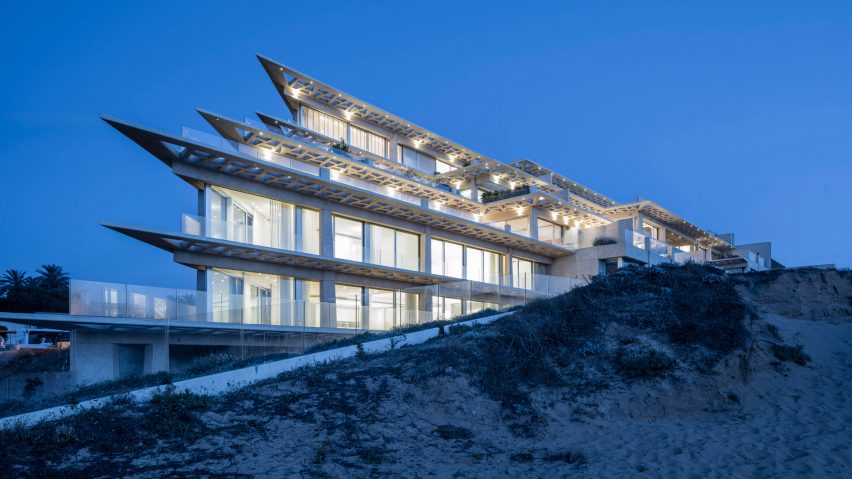
Perforated canopies shade terraces of cliff-top apartments in Israel
Gottesman-Szmelcman Architecture has completed a luxury apartment complex perched atop a cliff in Israel, featuring terraces sheltered beneath latticed canopies that overlook the Mediterranean Sea.
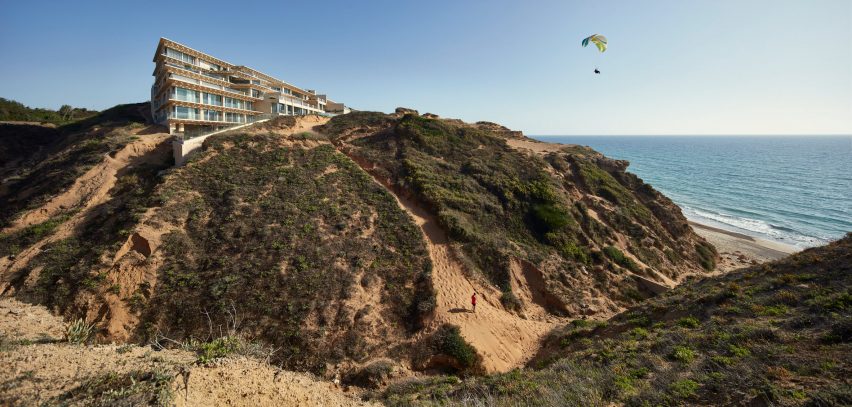
Israeli-Franco firm Gottesman-Szmelcman Architecture designed The Arsuf Residences for the gated community of Arsuf, Israel, which offers views of the sea and the adjacent Apollonia National Park. It is about a 25-minute drive north of Tel Aviv.
The development comprises ten private residences situated on an elevated site nestled between coastal sand dunes and the existing suburban district.
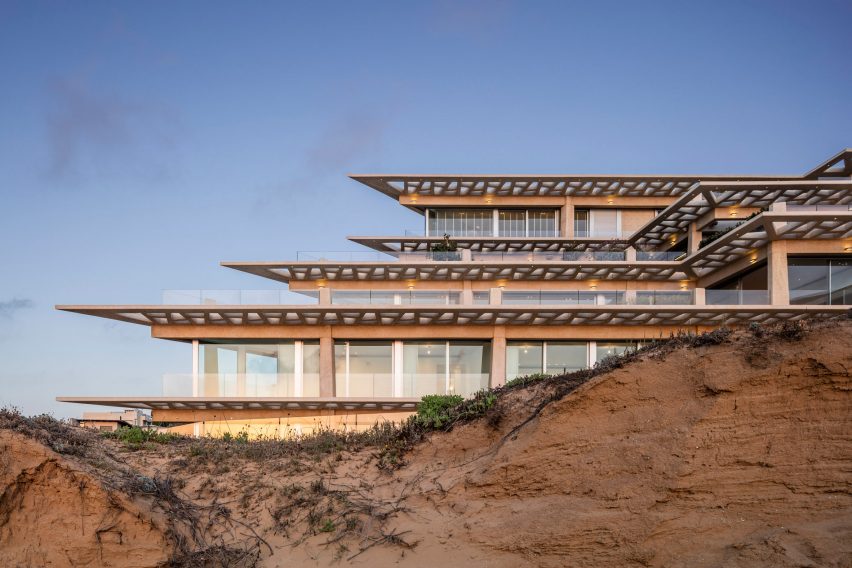
The main aim of the design project, which began with an invited competition over 20 years ago, was to make optimal use of the outstanding location and provide a blank canvas for the different owners to customise.
"The waterfront project was designed to maximise sea views while leaving room for individual experimentation with the interior design of all ten private residential units," said the architects.
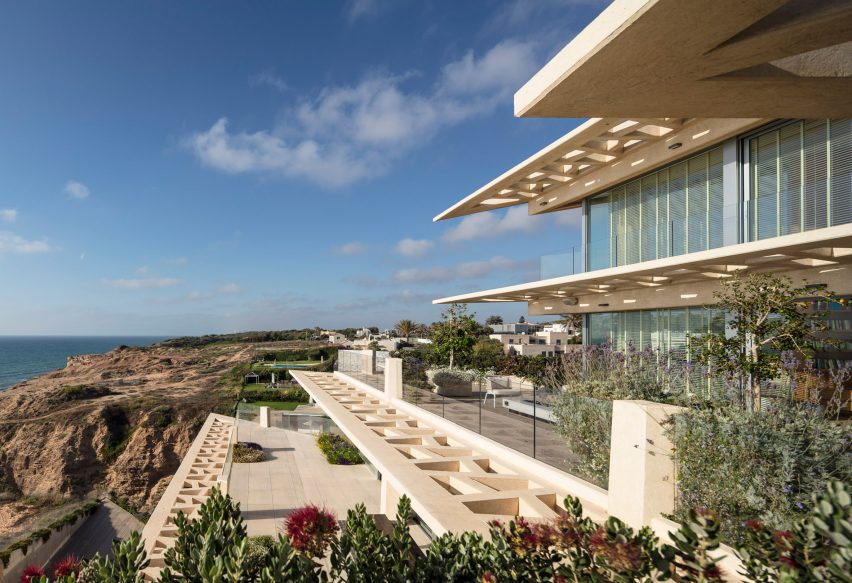
The building rises above its awkwardly shaped site, and also needed to respond to the challenges posed by the unstable terrain and corrosive climate resulting from the strong sea breezes and salty air.
Asymmetrical columns anchored in the dunes support the concrete structure and a series of stepped levels accommodating terraces along the sea-facing elevation.
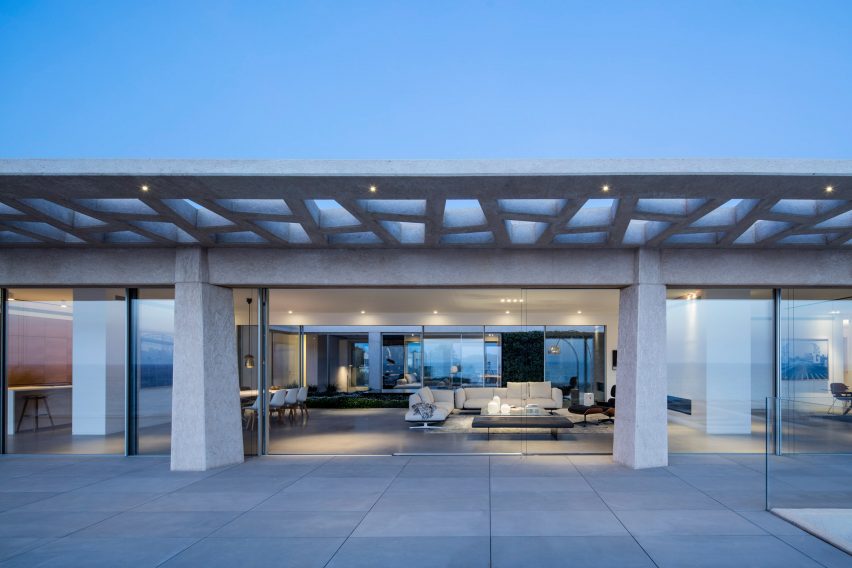
White fair-faced concrete used for structural and decorative elements was chosen to complement the tones of the sand dunes. Planting incorporated into the scheme also helps the building to blend in with the surrounding landscape.
Latticed canopies that project out from the facades to shield the terraces from direct sunlight cast geometric patterns of light and shade across these outdoor spaces.
The cantilevered screens are wrapped in oriented strand board (OSB) that lends them a similar tonality and surface texture to the concrete surfaces.
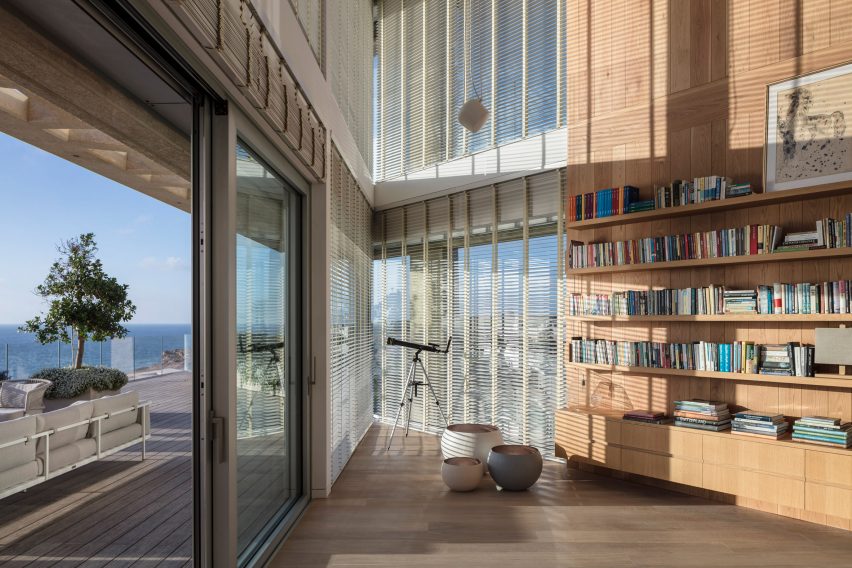
The same combination of concrete and OSB cladding is applied throughout communal spaces including a circulation area containing bridges and stairs that rise up through a vertical void.
A dark pool at the base of the stairs reflects the surfaces of walls and ceilings pierced by glowing lines of inset lighting.

Gottesman-Szmelcman Architecture wanted to give the homeowners the freedom to configure their property how they wanted, so each residence was developed in collaboration with an interior architect chosen by the client.
"It was our view that the building would benefit from a diversity of perspectives and interpretations," said the studio's co-founder, Asaf Gottesman, "and that the building was so strong that it could serve as a wonderful case study of how individual clients and their designers would address the potential of each space."
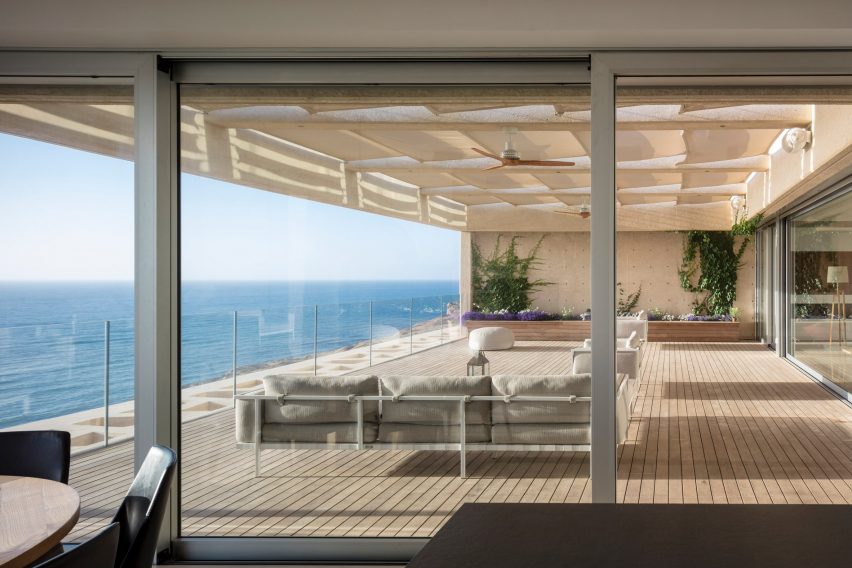
Many of the external designers chosen to execute the unique interior schemes previously worked for the firm, which was founded by Gottesman and Ami Szmelcman in 2003, and has offices in Tel Aviv and Paris.
The studio's previous projects include a concrete gallery in an industrial area of Tel Aviv featuring three high-level windows that bring natural light into the exhibition spaces.
Photography is by Amit Geron.